
OENO One
Scope & Guideline
Transforming Wine Knowledge into Practice.
Introduction
Aims and Scopes
- Oenological Science and Technology:
Research on the fermentation process, yeast interactions, and the impact of various additives on wine quality, including studies on non-Saccharomyces yeasts and their contributions to aroma and flavor profiles. - Viticulture Practices and Innovations:
Exploration of agronomic practices, including canopy management, irrigation strategies, and the impact of environmental factors on grapevine growth and fruit composition. - Sensory Analysis and Consumer Preferences:
Investigations into the sensory properties of wines, consumer perception, and the impact of various winemaking techniques on wine appreciation. - Climate Change and Adaptation Strategies:
Studies focusing on the effects of climate change on viticulture, including the adaptability of grapevine varieties and innovative practices to mitigate climate impacts. - Microbial Interactions and Biodiversity:
Research on the role of microbial communities in vineyards, including beneficial microorganisms and their effects on grape health and wine quality. - Chemical Composition and Wine Quality:
Analysis of the chemical constituents of grapes and wines, including polyphenols, acids, and volatile compounds, and their relationship to sensory attributes and quality.
Trending and Emerging
- Sustainable Viticulture and Ecological Practices:
A significant increase in research focused on sustainable practices, including organic viticulture, cover crops, and biodiversity, indicating a shift towards environmentally friendly approaches. - Impact of Climate Change on Viticulture:
Emerging research is increasingly addressing the challenges and adaptations required for viticulture in the face of climate change, including studies on phenology, grape composition, and varietal resilience. - Technological Innovations in Winemaking:
There is a growing trend towards the use of advanced technologies, such as UAVs for vineyard monitoring and machine learning for sensory analysis, reflecting the integration of science and technology in modern winemaking. - Microbiome and Fermentation Dynamics:
An increasing focus on the role of the microbiome in fermentation processes and grapevine health, exploring how microbial interactions can enhance wine quality and sustainability. - Consumer Behavior and Wine Preferences:
Research is increasingly addressing consumer preferences, including sensory evaluations and the psychological aspects of wine appreciation, reflecting a more nuanced understanding of the market.
Declining or Waning
- Traditional Winemaking Techniques:
Research focusing on historical or traditional winemaking processes has decreased, possibly as the field moves towards more innovative and technology-driven approaches. - Pesticide Use in Viticulture:
There appears to be a waning interest in studies solely focused on conventional pesticide applications, reflecting a shift towards sustainable and organic viticulture practices. - Single-varietal Studies:
While still relevant, there has been a noticeable decrease in the exploration of single-varietal wines, with a growing emphasis on blends and the complexity of terroir. - Standardized Sensory Evaluation Methods:
The reliance on traditional sensory evaluation methods is diminishing as new, more sophisticated approaches, including machine learning and advanced analytical techniques, gain traction. - Nutritional Analysis of Wine Components:
The focus on the nutritional aspects of wine, such as health benefits or dietary impacts, has decreased, possibly overshadowed by more pressing environmental and technological concerns.
Similar Journals
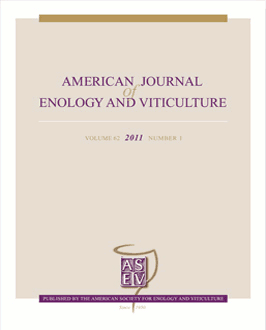
AMERICAN JOURNAL OF ENOLOGY AND VITICULTURE
Exploring the Depths of Grape and Wine Research.The American Journal of Enology and Viticulture, published by the American Society of Enology and Viticulture, serves as a pivotal platform for scholarly research in the disciplines of enology and viticulture. With a distinguished ISSN of 0002-9254 and an E-ISSN of 1943-7749, this esteemed journal has been contributing significant insights since its inception in 1973. Currently residing in the prestigious Q2 category for both Food Science and Horticulture, it ranks impressively among its peers, standing at #27 out of 115 in the Horticulture sector and #165 out of 389 in Food Science, reflecting its impact and relevance in agricultural research. The journal offers a wealth of valuable research articles, reviews, and studies that explore the intricacies of grape cultivation and wine production, making it an indispensable resource for researchers, professionals, and students keen on advancing their knowledge in these fields. Although it does not currently operate under an open-access model, the rigorous peer-review process ensures that only high-quality, scientifically sound content is disseminated, promoting innovation and collaboration in the pursuit of excellence in viticulture and enology.
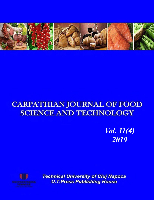
Carpathian Journal of Food Science and Technology
Fostering a Global Dialogue on Contemporary Food IssuesCarpathian Journal of Food Science and Technology, a distinguished publication from the NORTH UNIV CENTER BAIA MARE, has been a pivotal platform for disseminating groundbreaking research in the field of food science since its inception in 2009. With an ISSN of 2066-6845 and an E-ISSN of 2344-5459, this Open Access journal aims to promote knowledge and innovation, offering unrestricted access to its content, thereby enhancing visibility for authors and facilitating a wider readership. Based in Romania, the journal plays a crucial role in advancing scientific inquiry within the agricultural and biological sciences, particularly focusing on contemporary food science issues. As it continues its convergence through 2024, the journal currently holds a Q4 ranking in the Food Science category, allowing it to carve out a unique niche within the academic community despite its current Scopus percentile ranking of 19th. Scholars, researchers, and students in the field will find the journal an invaluable resource for the latest advancements and discussions, making it an essential addition to their academic pursuits.

Journal of Food and Nutrition Research
Transforming Food Science into Nutritional KnowledgeJournal of Food and Nutrition Research, published by the VUP FOOD RESEARCH INST in Bratislava, Slovakia, serves as a vital platform for disseminating cutting-edge research in the fields of food science and nutrition. With an ISSN of 1336-8672 and an E-ISSN of 1338-4260, this journal emphasizes the importance of interdisciplinary approaches to address contemporary challenges related to food quality, dietary practices, and nutritional health. Notably recognized in the 2023 Scopus rankings, the journal is classified in Q3 quartiles for both Food Science and Nutrition & Dietetics, providing a forum for researchers aiming to enhance knowledge and practices within these domains. Those engaged in academia and industry will find the journal invaluable for its comprehensive scope, which covers novel food technologies, nutrition interventions, and the implications of dietary behaviors. Though not open access, the journal is dedicated to enriching the academic conversation and contributing to advancements in public health and nutrition policies.

SOUTH AFRICAN JOURNAL OF ENOLOGY AND VITICULTURE
Cultivating Excellence in Wine ResearchThe South African Journal of Enology and Viticulture, published by the South African Society of Enology and Viticulture (SASEV), stands as a pivotal platform for research in the fields of enology and viticulture. With an ISSN of 0253-939X and E-ISSN 2224-7904, this Open Access journal has been contributing significant scholarly work since 1980, ensuring accessibility to a broad audience of researchers, professionals, and students engaged in the viticulture and winemaking sectors. Based in Stellenbosch, South Africa, the journal has achieved commendable Q3 rankings in the fields of Food Science and Horticulture as of 2023, reflecting its growing influence in these areas. With a comprehensive converged publishing span from 2004 to 2024, the journal seeks to expand the frontiers of knowledge by publishing innovative research, reviews, and case studies that address current challenges and advancements in viticulture and enology. Researchers engaged in agricultural and biological sciences will find valuable insights, as highlighted by its Scopus ranks, particularly in horticulture (Rank #46/115) and food science (Rank #215/389), placing it in the th percentile of international academic standards.
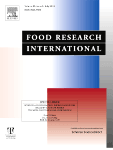
FOOD RESEARCH INTERNATIONAL
Empowering the Global Food Science CommunityFOOD RESEARCH INTERNATIONAL is a premier academic journal published by ELSEVIER, specializing in the field of Food Science. With an impressive impact factor and ranked Q1 in the 2023 category quartiles, it stands at the forefront of research, positioned 17th out of 389 in the Scopus ranking for Agricultural and Biological Sciences, attaining a commendable 95th percentile. The journal publishes high-quality, peer-reviewed articles that cover a broad spectrum of topics, including food safety, quality control, nutrition, and biotechnology, making it an invaluable resource for academics, industry professionals, and students alike. As FOOD RESEARCH INTERNATIONAL seeks to enhance understanding and advance technologies related to food, it encourages innovative perspectives and interdisciplinary research. The journal, active from 1992 and continuing through 2024, is an essential platform for disseminating vital findings and fostering collaboration within the global food science community.

Fermentation-Basel
Pioneering Insights in Food and Plant ScienceFermentation-Basel is a premier open access journal published by MDPI, located in the heart of Switzerland, that has been at the forefront of advancement in the fields of Biochemistry, Genetics, Molecular Biology, Food Science, and Plant Science since its inception in 2015. With an impact factor that reflects its growing reputation, the journal is categorized within the Q2 quartile in multiple disciplines, illustrating its significant contributions to research and providing a critical platform for scholars and professionals alike. The journal showcases a wide range of topics related to fermentation processes, fostering innovation in both fundamental research and practical applications across various sectors. Having converged its focus from 2015 to 2024, Fermentation-Basel remains committed to facilitating interdisciplinary collaboration and disseminating valuable knowledge, making it an indispensable resource for students, researchers, and industry experts eager to stay abreast of the latest developments in fermentation science.

Kvasny Prumysl
Advancing the Art and Science of Brewing.Kvasny Prumysl is a distinguished open-access journal dedicated to the field of brewing science and technology, published by the Research Institute Brewing & Malting. Since its inception in 2019 as an open-access platform, Kvasny Prumysl aims to provide a comprehensive forum for researchers, professionals, and students in the brewing sector to share cutting-edge research, innovative methodologies, and significant advancements in brewing science. With an ISSN of 2571-3868 and an E-ISSN of 2570-8619, this journal fosters collaboration and knowledge exchange within the brewing community, contributing to sustainable practices and excellence in brewing. Based in Prague, Czech Republic, Kvasny Prumysl seeks to elevate its global presence, ensuring that the latest findings are accessible to all through its open-access model. The journal invites submissions through a rigorous peer-review process, reinforcing its commitment to high-quality research in the brewing industry.
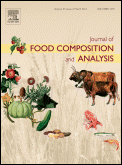
JOURNAL OF FOOD COMPOSITION AND ANALYSIS
Advancing the Science of Food Quality and NutritionJOURNAL OF FOOD COMPOSITION AND ANALYSIS, published by Academic Press Inc. Elsevier Science, is a leading peer-reviewed journal in the field of Food Science, recognized for its substantial impact on advancing research and knowledge within the discipline. With a commendable Q1 quartile ranking in the 2023 category of Food Science and a Scopus rank of 86/389, this journal holds a prestigious position, emphasizing its significance in crop and food quality research. The journal's scope encompasses a wide range of studies related to food composition, nutrition, and analytical methodologies, aiming to foster innovation and knowledge dissemination in food science. Although it operates under a subscription model, it remains an essential resource for researchers, professionals, and students seeking credible and cutting-edge findings. Established in 1987, the JOURNAL OF FOOD COMPOSITION AND ANALYSIS continues to be at the forefront of food science, contributing to the understanding of food quality and nutrition standards globally.
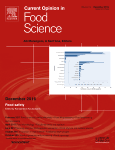
Current Opinion in Food Science
Pioneering Insights for a Sustainable Food FutureCurrent Opinion in Food Science is a premier peer-reviewed journal published by ELSEVIER SCI LTD that focuses on the latest advancements and research in the domain of food science and technology. With its ISSN 2214-7993 and E-ISSN 2214-8000, this journal serves as a critical platform for researchers and professionals to share insights and opinions on emerging trends, innovations, and challenges faced in food science. The journal enjoys an impressive impact factor and ranks in the first quartile (Q1) in both Applied Microbiology and Biotechnology and Food Science, symbolizing its influence and reputation in the field. It is strategically located in the Netherlands and conducts its academic dialogue with a broad scope that includes essential topics in food safety, nutrition, and sustainable practices. Operating from 2015 to 2024, the journal has established itself as a critical resource for the global academic community, boasting excellent Scopus rankings—#9 out of 389 in Food Science and #6 out of 127 in Applied Microbiology and Biotechnology—indicating its high relevance and impact. Readers can look forward to insightful articles and comprehensive reviews that bridge the gap between fundamental research and practical application in the ever-evolving food science landscape.

Beverages
Unlocking the Potential of Beverage ScienceBeverages is a premier open access journal published by MDPI, dedicated to the study of all aspects related to beverages, including their production, consumption, sensory properties, and health implications. Since its inception in 2015, the journal has established a notable presence in the field of Food Science, currently ranking in Q2 according to the latest 2023 category quartiles. With an ISSN of 2306-5710, it provides a platform for researchers, professionals, and students to share innovative research and insights that can advance the understanding and quality of beverage-related science. As an open access journal, Beverages ensures wide accessibility to its content, fostering collaboration and dissemination of knowledge across the global academic community. Based in Basel, Switzerland, the journal embodies a commitment to high-quality research and impactful contributions to the beverage industry and academia.